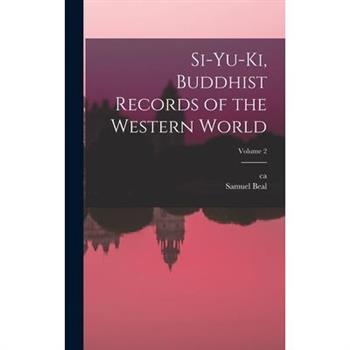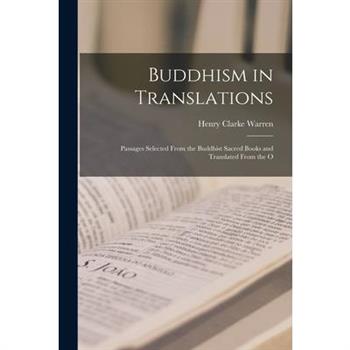Reflective Meditation
Reflective Meditation: cultivating kindness and curiosity in the Buddha's company welcomes you into a lively, open minded, often humorous, and astoundingly insightful conversation between the founders of reflective meditation.You may find yourself laughing out loud or feeling a great sense of relief as Linda Modaro and Nelly Kaufer lightheartedly articulate a broad, roomy, and inclusive path for turning inward, reflecting, and using the language of experience to cultivate a deeply rewarding and satisfying meditation practice.Amidst the banter, you will receive clear instructions and guidance on how to develop your own reflective meditation practice, as well as a sensitive and intelligent overview of basic early Buddhist teachings.
The Signless and the Deathless
An insightful examination of the end of suffering that draws much-needed attention to two overlooked factors of Nirvana: signlessness and deathlessness. Nirvana is a critical part of the Buddhist path, though it remains a difficult concept to fully understand for Buddhist practitioners. In The Signless and the Deathless: On the Realization of Nirvana, scholar-monk Bhikkhu Analayo breaks new ground, or rediscovers old ground, by showing the reader that realizing Nirvana entails "a complete stepping out of the way the mind usually constructs experience." With his extraordinary mastery of canonical Buddhist languages, Venerable Analayo first takes the reader through discussions in early Buddhist suttas on signs (Pali nimitta), the characteristic marks of things that signal to us what they are, and on cultivating concentration on signlessness as a meditative practice. Through practicing bare awareness, we can stop defilements that come from grasping at signs--and stop signs from arising in the first place. He then turns to deathlessness. Deftly avoiding the extremes of nihilism and eternalism that often cloud our understanding of Nirvana, Venerable Analayo shows us that deathless as an epithet of Nirvana "stands for the complete transcendence of mental affliction by mortality"--ours or others'--and that it is achievable while still alive. Advanced practitioners and scholars alike will value the work for its meticulous academic expertise and its novel way of explaining the highest of all Buddhist goals--the final end of suffering.
Writings of Nichiren Shonin Followers II
This volume, the 15th project of the English Translation Committee of the Nichiren Shū Overseas Propagation Promotion Association (NOPPA), concludes the English translation project of Nichiren Shōnin's writings sponsored by NOPPA. It constitutes all 86 writings of Buddhist reformer Nichiren Shōnin (1222-1282) included in the Nichiren Shonin Zenshū, Complete Writings of Nichiren Shonin, Volume 7: Followers II, compiled by Genshō Imanari, Professor Emeritus of Risshō University, and published in Tokyo in 1992. The Nichiren Shonin Zenshu is a modern Japanese version of Nichiren's original writings, translated and edited with annotations by modern scholars of Nichiren Buddhism. Despite its all-inclusive title, the Zenshu is highly selective in that it takes into account only writings considered bibliographically authentic: attested to by original manuscripts. Among such texts, those included in the Showa Teihon Nichiren Shonin Ibun, Writings of Nichiren Shonin Standardized in the Showa Period, complied by the Rissho Daigaku Nichiren Kyogaku Kenkyu-jo, Center for the Study of Nichiren Buddhism, published by Minobusan Kuonji Temple between 1951 and 1959, are considered the most authoritative, and they provide the basic texts for this volume.This is the second of the two "Followers" volumes and presents a vivid picture of life at Mt. Minobu during the last years of Nichiren's life. Those who visit Mt. Minobu today are used to arriving in comfort, seated in cars and buses, staying in welcoming accommodations with delicious food and drink, and visiting beautiful temples and shrines to pay our respects to the Lotus Sutra, Shakyamuni Buddha and Nichiren Shonin. In the days Nichiren lived there, the journey to Mt. Minobu was difficult. In good weather roads were steep, narrow and filled with hazards. In winter they were even worse.It was impossible for the community gathered around Nichiren to support itself, so they were entirely dependent on donations brought to Mt. Minobu. While Nichiren was always grateful for any donations he received, his thank-you letters describe how tenuous their survival was in that harsh environment.In one of his replies to Lord Ueno, Nichiren told Ueno how "The two meter deep snow covered mountain path, which normally has no traffic, makes it impossible for anyone to visit me here." His "clothing [was] not thick enough to protect me against the freezing weather," his food supply was gone and he felt like he was at the end of his life. When he received Ueno's donation he "had just made up my mind to die of hunger once and for all," but Ueno's gift "was like adding oil to a light that was about to burn out."Had it not been for those who supported Nichiren's life on Minobu we would not have our practice of the Wonderful Dharma today. We should be inspired by these letters to continue to support Mt. Minobu and everywhere else where people work to spread Nichiren's faith and insight throughout the world.
Voice of the Primordial Buddha
Voice of the Primordial Buddha is Anam Thubten's commentary on the well-known text, The Sharp Vajra of Awareness Tantra, by twentieth-century master Dudjom Lingpa (1835-1903). His text is revered by many people in Tibet as a sacred scripture. This book covers the entire Vajrayana path, especially Dzogchen, with language full of potency. Reading it can shake one's mind from its foundation and transform it to its highest potential.
Power and Agency in the Lives of Contemporary Tibetan Nuns
This book examines the lived experiences of oppression and opportunities encountered by contemporary Tibetan Buddhist nuns living in the People's Republic of China and the Tibetan exile community in India. It investigates how the intersections of the nuns' female gender, their Buddhist religion and their Tibetan nationality on the one hand produce subordination and an unequal distribution of power but, on the other, provide the nuns with opportunities and agency. Depending on the intersection of her status positions, the Tibetan nun can be either disadvantaged or privileged, and sometimes both at the same time. Power structures and relations that disadvantage nuns as women, as religious practitioners, and as Tibetans, are constructed and maintained in different domains of power. In the structural domain, traditional but still dominant institutions - such as the distribution of work, marriage, educational practices and religious institutions - disadvantage Tibetan nuns. In the disciplinary domain of power, the nuns are monitored by traditional culture and the Chinese authorities. The unequal distribution of power in these domains is justified by hegemonic ideas based on religious and cultural beliefs, ideas of religion and modernity, and religion and gender. These domains of power find their expression in the everyday life in the interpersonal sphere. Analysis also reveals that many nuns were highly active in choosing and determining their life course. Monastic life offers Tibetan women freedom from the suffering faced by laywomen. The juncture of their gender, religion and nationality also provides them with agency in their nationalism, which is both visible and more subtle. Monastic life also offers them religious agency as compassionate bodhisattvas, who aim to not only benefit other living beings but also themselves.
Power and Agency in the Lives of Contemporary Tibetan Nuns
This book examines the lived experiences of oppression and opportunities encountered by contemporary Tibetan Buddhist nuns living in the People's Republic of China and the Tibetan exile community in India. It investigates how the intersections of the nuns' female gender, their Buddhist religion and their Tibetan nationality on the one hand produce subordination and an unequal distribution of power but, on the other, provide the nuns with opportunities and agency. Depending on the intersection of her status positions, the Tibetan nun can be either disadvantaged or privileged, and sometimes both at the same time. Power structures and relations that disadvantage nuns as women, as religious practitioners, and as Tibetans, are constructed and maintained in different domains of power. In the structural domain, traditional but still dominant institutions - such as the distribution of work, marriage, educational practices and religious institutions - disadvantage Tibetan nuns. In the disciplinary domain of power, the nuns are monitored by traditional culture and the Chinese authorities. The unequal distribution of power in these domains is justified by hegemonic ideas based on religious and cultural beliefs, ideas of religion and modernity, and religion and gender. These domains of power find their expression in the everyday life in the interpersonal sphere. Analysis also reveals that many nuns were highly active in choosing and determining their life course. Monastic life offers Tibetan women freedom from the suffering faced by laywomen. The juncture of their gender, religion and nationality also provides them with agency in their nationalism, which is both visible and more subtle. Monastic life also offers them religious agency as compassionate bodhisattvas, who aim to not only benefit other living beings but also themselves.
Middle Way Mind Training
BASED ON 2500 YEARS OF BUDDHIST SCIENCE There has never been a better time to reevaluate our understanding of happiness. With epidemic rates of depression and anxiety, traditional methods of dealing with these problems have come under scrutiny. More and more psychologists are retracing back to the teachings of the Buddha, who mapped the workings of the human mind more than anyone in history. Middle Way Mind Training utilizes these profound concepts and places them in the forefront of modern science. Drawing on ancient Buddhist wisdom, Frank Navratil has developed an innovative effective holistic method to reduce unnecessary human suffering and an effective scientific path towards a happy and fulfilling life. This book is for anyone who wishes to understand what happiness really is, why it often evades us, where it is found and a proven practical method of how to uncover it and experience it like never before. It offers practical mind-training exercises that anyone can follow that lead to reducing unnecessary suffering in life, a better ability in dealing with problems, tragedies, conflicts and hardships while maximizing happiness and well being.Dr. Frank Navratil is a Canadian-born naturopathic doctor, wellness coach and lecturer, mindfulness-based cognitive practitioner and meditation instructor. He has spent over 30 years teaching and consulting clients to improve their physical, mental and psychological health and well-being. He offers workshops, courses, lectures and consultations based on his Middle Way Mind Training method, for individuals, groups and companies around the world.
Unravel the Veil
Unravel the VeilMay the poetry in this book serve as a reminder to listen to the subtle voice of your Intuition.Trust your inner guidance so it may lead you to your life's purpose.Embrace the light within you and shine brightly, especially during the darkest times.Allow your inner knowing to speak in the clearest way by being present in each moment.Always have the courage to follow its wise advice.Focus on the all-knowing wisdom within you in order to answer the necessary questions: Who am I?What is the meaning of life?Why am I here?Let the answers which arise manifest as your legacy to this world.Unravel the Veil is the second in a series of seven poetry books. It is composed of poems associated with topics of the third eye chakra. The third eye chakra is the sixth chakra. It is the center of our intuition, vision, and inner knowing.The Chakra SystemAccording to the Vedas (ancient Indian sacred texts), the physical body is composed of seven primary energy or vortex centers called chakras. Chakra is the Sanskrit word for wheel. The seven main chakras run along the spine-beginning with the root chakra and ending with the crown chakra. The main chakras are: 1 Root2 Sacral3 Solar plexus4 Heart5 Throat6 Third eye7 CrownEach chakra has a different color, element, sound, mantra, function, location, major organ, and association. The flow or blockage/imbalance of subtle energy in each chakra determines the health or disease of the individual body.Third Eye Chakra information: Sanskrit name: AjnaColor: IndigoElement: LightSound: OmMantra: "I See"Practice: Visualization meditationFunction: Knowing, intuition and insight, inner visionLocation: Between the eyebrows slightly above eye levelOrgan: Pineal gland, eyes, nose, ears, brain, nervous systemAssociations: Emotional intelligence, Truth, openness to new ideas, psychic abilitiesDysfunctions when imbalanced: Nightmares, blurred vision, deafness, headaches, seizures, learning disabilities, and doubting your inner wisdom.
The Extensive Guru Yoga of Vajrayogini
The Extensive Guru Yoga of Vajrayogini is arranged in Tibetan, phonetics, and English translation by Khenpo Migmar Tseten from original sources. It is our hope that these pages offer a window into the awakened state and inspire you in your own practice. May all sentient beings everywhere experience peace. Important requirement: It is very important to receive the empowerment, transmission, and instruction from a Master who holds the Vajrayogini lineage to do these practices.
In the Land of Tigers and Snakes
Animals play crucial roles in Buddhist thought and practice. However, many symbolically or culturally significant animals found in India, where Buddhism originated, do not inhabit China, to which Buddhism spread in the medieval period. In order to adapt Buddhist ideas and imagery to the Chinese context, writers reinterpreted and modified the meanings different creatures possessed. Medieval sources tell stories of monks taming wild tigers, detail rituals for killing snakes, and even address the question of whether a parrot could achieve enlightenment. Huaiyu Chen examines how Buddhist ideas about animals changed and were changed by medieval Chinese culture. He explores the entangled relations among animals, religions, the state, and local communities, considering both the multivalent meanings associated with animals and the daily experience of living with the natural world. Chen illustrates how Buddhism influenced Chinese knowledge and experience of animals as well as how Chinese state ideology, Daoism, and local cultic practices reshaped Buddhism. He shows how Buddhism, Confucianism, and Daoism developed doctrines, rituals, discourses, and practices to manage power relations between animals and humans. Drawing on a wide range of sources, including traditional texts, stone inscriptions, manuscripts, and visual culture, this interdisciplinary book bridges history, religious studies, animal studies, and environmental studies. In examining how Buddhist depictions of the natural world and Chinese taxonomies of animals mutually enriched each other, In the Land of Tigers and Snakes offers a new perspective on how Buddhism took root in Chinese society.
Complete Enlightenment
Complete Enlightenment is the first authoritative translation and commentary on The Sutra of Complete Enlightenment, a central text that shaped the development of East Asian Buddhism and Ch'an (Chinese Zen). The text is set in the form of a transcription of discussions between the Buddha and the twelve enlightened beings(bodhisattvas), who question him on all aspects of spiritual practice. This new translation preserves all the liveliness and nuance of the text in the original Chinese. The sutra's ancient wisdom is brought to life by the commentaries of Master Sheng-yen, one of the most revered living Buddhist masters in the Ch'an lineage. This is truly a manual for the spiritual journey toward complete enlightenment, providing the key to the deep, poetic, and practical meanings of the scripture.
In the Land of Tigers and Snakes
Animals play crucial roles in Buddhist thought and practice. However, many symbolically or culturally significant animals found in India, where Buddhism originated, do not inhabit China, to which Buddhism spread in the medieval period. In order to adapt Buddhist ideas and imagery to the Chinese context, writers reinterpreted and modified the meanings different creatures possessed. Medieval sources tell stories of monks taming wild tigers, detail rituals for killing snakes, and even address the question of whether a parrot could achieve enlightenment. Huaiyu Chen examines how Buddhist ideas about animals changed and were changed by medieval Chinese culture. He explores the entangled relations among animals, religions, the state, and local communities, considering both the multivalent meanings associated with animals and the daily experience of living with the natural world. Chen illustrates how Buddhism influenced Chinese knowledge and experience of animals as well as how Chinese state ideology, Daoism, and local cultic practices reshaped Buddhism. He shows how Buddhism, Confucianism, and Daoism developed doctrines, rituals, discourses, and practices to manage power relations between animals and humans. Drawing on a wide range of sources, including traditional texts, stone inscriptions, manuscripts, and visual culture, this interdisciplinary book bridges history, religious studies, animal studies, and environmental studies. In examining how Buddhist depictions of the natural world and Chinese taxonomies of animals mutually enriched each other, In the Land of Tigers and Snakes offers a new perspective on how Buddhism took root in Chinese society.
Fusang, Or, The Discovery of America by Chinese Buddhist Priests in the Fifth Century
This work has been selected by scholars as being culturally important, and is part of the knowledge base of civilization as we know it.This work is in the "public domain in the United States of America, and possibly other nations. Within the United States, you may freely copy and distribute this work, as no entity (individual or corporate) has a copyright on the body of the work.Scholars believe, and we concur, that this work is important enough to be preserved, reproduced, and made generally available to the public. We appreciate your support of the preservation process, and thank you for being an important part of keeping this knowledge alive and relevant.
Fusang, Or, The Discovery of America by Chinese Buddhist Priests in the Fifth Century
This work has been selected by scholars as being culturally important, and is part of the knowledge base of civilization as we know it.This work is in the "public domain in the United States of America, and possibly other nations. Within the United States, you may freely copy and distribute this work, as no entity (individual or corporate) has a copyright on the body of the work.Scholars believe, and we concur, that this work is important enough to be preserved, reproduced, and made generally available to the public. We appreciate your support of the preservation process, and thank you for being an important part of keeping this knowledge alive and relevant.
The Gospel of Buddha
This work has been selected by scholars as being culturally important, and is part of the knowledge base of civilization as we know it.This work is in the "public domain in the United States of America, and possibly other nations. Within the United States, you may freely copy and distribute this work, as no entity (individual or corporate) has a copyright on the body of the work.Scholars believe, and we concur, that this work is important enough to be preserved, reproduced, and made generally available to the public. We appreciate your support of the preservation process, and thank you for being an important part of keeping this knowledge alive and relevant.
Esoteric Buddhism
This work has been selected by scholars as being culturally important, and is part of the knowledge base of civilization as we know it.This work is in the "public domain in the United States of America, and possibly other nations. Within the United States, you may freely copy and distribute this work, as no entity (individual or corporate) has a copyright on the body of the work.Scholars believe, and we concur, that this work is important enough to be preserved, reproduced, and made generally available to the public. We appreciate your support of the preservation process, and thank you for being an important part of keeping this knowledge alive and relevant.
Si-yu-ki, Buddhist Records of the Western World;
This work has been selected by scholars as being culturally important, and is part of the knowledge base of civilization as we know it.This work is in the "public domain in the United States of America, and possibly other nations. Within the United States, you may freely copy and distribute this work, as no entity (individual or corporate) has a copyright on the body of the work.Scholars believe, and we concur, that this work is important enough to be preserved, reproduced, and made generally available to the public. We appreciate your support of the preservation process, and thank you for being an important part of keeping this knowledge alive and relevant.
Buddha
This work has been selected by scholars as being culturally important, and is part of the knowledge base of civilization as we know it.This work is in the "public domain in the United States of America, and possibly other nations. Within the United States, you may freely copy and distribute this work, as no entity (individual or corporate) has a copyright on the body of the work.Scholars believe, and we concur, that this work is important enough to be preserved, reproduced, and made generally available to the public. We appreciate your support of the preservation process, and thank you for being an important part of keeping this knowledge alive and relevant.
Buddhist Monasteries of Nepal
A definitive survey of the rich legacy of some 360 Buddhist architectural structures and remains in and around the Kathmandu Valley, including both the urban centers of Kathmandu, Patan and Baktapur, as well as surrounding villages. The study examines, for each site, its history, extant sacred images, details of toraṇa, caitya and other architectural features, as well as the overall maṇḍala represented in the monastery structure. The author also records a myriad of ethnographic details of Nepalese monastic life, such as daily and annual rituals, initiations, lineage deities, monastic governing structure and economics. First published in 1985 in a local Nepalese imprint, this newly edited volume, including some additional illustrations, benefits from modern scanning technology, revealing for the first time the high quality of the historic photographs.
Esoteric Buddhism
This work has been selected by scholars as being culturally important, and is part of the knowledge base of civilization as we know it.This work is in the "public domain in the United States of America, and possibly other nations. Within the United States, you may freely copy and distribute this work, as no entity (individual or corporate) has a copyright on the body of the work.Scholars believe, and we concur, that this work is important enough to be preserved, reproduced, and made generally available to the public. We appreciate your support of the preservation process, and thank you for being an important part of keeping this knowledge alive and relevant.
The Enlightenment Trap
"A powerful investigation into the appeal - and the danger - of enlightenment" The Pacific StandardIn 2012, 38-year-old Ian Thorson's search for spiritual transcendence ended in tragedy on a remote Arizona mountaintop. His wife, a woman anointed as a goddess by an eccentric Buddhist community, held him in her arms as he slowly died from dehydration and dysentery. For Scott Carney, a journalist and anthropologist who lived in India for six years, Thorson's death was just the most recent iteration of an unspoken epidemic that connected intensive meditation and mental instability.The Enlightenment Trap explores how Tibetan Buddhism in the West morphed from its roots in the Himalayan foothills into a fundamentally new American religion. For Thorson, the entry point into this new faith was Geshe Michael Roach, the supreme spiritual leader of Diamond Mountain University.Carney unravels the cult-like practices of Diamond Mountain to illuminate the uniquely American tendency to mix and match Eastern religious traditions like LEGO pieces. The result is that for some, enlightenment is a synonym for almost god-like powers, and achieving it can become more important than life itself.Aided by Thorson's private papers and cutting-edge neurological research, the book reveals the profound impact of intensive meditation on the brain. Carney exposes stories of miracles and black magic, sexualized rituals and tantric rites from former Diamond Mountain acolytes. The Enlightenment Trap is a gripping work of investigative journalism that reveals how the path to enlightenment can be riddled with danger. This revised 2023 edition includes two previously-unreleased chapters, an author's note and new updates to the story.
Mt. Adams Buddhist Temple Chant Book
2022 Chant Book for Mt. Adams Buddhist Temple. Trout Lake, WA USA https: //mtadamsbuddhisttemple.org/
Zen and the Beat Way
"Everything disappears into nothing at all, but out of that same nothing at all come all the new things, forever and ever." --Alan Watts When Jack Kerouac wrote his novel Dharma Bums, his views on Zen Buddhism echoed the sentiments of the Beat Generation, who found in Zen a way of life unencumbered by the limits of "square" society. And it was the philosopher Alan Watts who first wrote and spoke about Zen and Eastern culture in terms accessible to mainstream Western audiences. Watts was an engaging speaker and an icon of America's Beat and Counterculture movements who named among his friends Aldous Huxley, Lawrence Ferlinghetti, John Cage, and Joseph Campbell. Through his popular radio series Way Beyond the West, Alan Watts presented the practical side of Zen, which he described as "a cure for education and culture." By the early sixties, his radio programs were renowned for their synthesis of Eastern wisdom and everyday life. Watts' teachings during an era of turmoil and political strife are as timely today as they were over 50 years ago. The fascinating essays in this collection include: "The Beat Way of Life" How the Beats lived an uncomplicated Zen life and despite being denigrated as worthless slackers, like Eastern thinkers, they actively pursued "an arduous course of spiritual and psychological discipline""Return to the Forest" How the popular works of the writer Joseph Campbell influenced the earliest Beat traditions by advocating the internal search for individual truth over learned schools of thought "The Democratization of Buddhism" How Buddhism is actually a "religion of no-religion," that conveys the spiritual through the everyday and the ordinary and recognizes no division between the twoThis book is an engaging introduction to Watts' fascinating and enduring Zen teachings.
Journal of the Pali Text Society
This work has been selected by scholars as being culturally important, and is part of the knowledge base of civilization as we know it.This work is in the "public domain in the United States of America, and possibly other nations. Within the United States, you may freely copy and distribute this work, as no entity (individual or corporate) has a copyright on the body of the work.Scholars believe, and we concur, that this work is important enough to be preserved, reproduced, and made generally available to the public. We appreciate your support of the preservation process, and thank you for being an important part of keeping this knowledge alive and relevant.
Si-yu-ki, Buddhist Records of the Western World;
This work has been selected by scholars as being culturally important, and is part of the knowledge base of civilization as we know it.This work is in the "public domain in the United States of America, and possibly other nations. Within the United States, you may freely copy and distribute this work, as no entity (individual or corporate) has a copyright on the body of the work.Scholars believe, and we concur, that this work is important enough to be preserved, reproduced, and made generally available to the public. We appreciate your support of the preservation process, and thank you for being an important part of keeping this knowledge alive and relevant.
The Ng繹ndro
The Heart Wisdom series aims to make the teachings of Ringu Tulku Rinpoche available to a wider audience, by bringing his oral teachings to the written page. This volume comprises a set of teachings on the Ng繹ndro contemplations and practices, which are foundational to the experience of Mahamudra.
Like Dreams & Clouds
The Heart Wisdom series aims to make the teachings of Ringu Tulku Rinpoche available to a wider audience, by bringing his oral teachings to the written page. This volume looks, in a simple way, at the fundamental Buddhist view called Emptiness or Interdependence: how things really exist. It includes a short teaching on Mahamudra and Dzogchen, approaches that bring us to experience this view directly.
Luminous Awareness
"I am confident readers will find this book, Luminous Awareness: A Guidebook to Natural Awakening in Life and in Death, interesting and useful in understanding the way it explains the Buddhist approach to the end of life." His Holiness the Dalai Lama, from the foreword "Luminous Awareness asks "What does the Buddha mean by rouse and correct ourselves? And how exactly do we look to our true nature?" This book is about providing the answers and offering a variety of practices to bring us closer to our true selves. Written with clarity and dedication to the dharma, Pema Duddul embraces the possibilities of an awakened life." Sharon Salzberg, author of the books Loving Kindness and Real Happiness "That no one is exempt from death and the dying process is a central truth to the Buddhist tradition. Luminous Awareness offers a clear and approachable path to better understand the transformational power created in developing an engaged, contemplative relationship to the dying process. Pema D羹ddul skilfully distils this wisdom in a way that makes this rich work accessible, relatable and applicable to a varied readership." Lama Justin von Bujdoss, author of Modern Tantric Buddhism: Embodiment and Authenticity in Dharma Practice. "Luminous Awareness holds within it everything one needs to awaken in this lifetime, or at the time of death. Full of essential practice instructions, inspiring words from great masters and clear explanations of the fundamentals of the Buddha-Dharma, I could not recommend this book more highly. It is a joy to read. Dudjom Pema D羹ddul is an exceptional Dharma teacher." Jamyang Tenphel, author of Resting in Stillness and The Awakening Heart: 108 Pith Instructions for Buddhist Practice. A guidebook to natural awakening or enlightenment, this book lays out a path of simple, unrestricted practices leading to the exact same result as the revered tradition of Tibetan Dzogchen - total awakening. Luminous Awareness translates the mystical and complex rituals and practices of The Tibetan Book of the Dead into a path of simple daily actions we can all apply right now. Luminous Awareness is about life and death, but it is also about much more. Its true focus is how we can all awaken to our true or enlightened nature, which is the ultimate nature of all. This single, easy to read book contains everything you might need on the Buddhist path. Inspired by the spirit of simplicity and openness of the Tibetan Dzogchen or Great Perfection tradition, Luminous Awareness is a comprehensive guide to living and dying with purpose and heart. The book contains easy to apply guidance on the practices related to The Tibetan Book of the Dead that lead to complete liberation in our own lifetimes. In this book you will find simple meditations and contemplations to transform your experience of daily life into one of awakening, as well as lucid descriptions of the processes of dying, the after-death states (or bardos) and rebirth or reincarnation. Pema D羹ddul, a Buddhist chaplain, poet and scholar, is a student of Dudjom Rinpoche (1904-1987), Chogyal Namkhai Norbu Rinpoche (1938 - 2018), Jetsunma Tenzin Palmo, Lama Karma Lhundup Rinpoche and Dungse Namgyal Dawa Rinpoche. He has decades of experience teaching the Dharma in the modern world and teaches with great clarity and simplicity. With Luminous Awareness he shows how to apply the mystical bardo teachings to our everyday experience and bring purpose and joy to both living and dying.
Ancestor-worship and Japanese Law
This work has been selected by scholars as being culturally important, and is part of the knowledge base of civilization as we know it.This work is in the "public domain in the United States of America, and possibly other nations. Within the United States, you may freely copy and distribute this work, as no entity (individual or corporate) has a copyright on the body of the work.Scholars believe, and we concur, that this work is important enough to be preserved, reproduced, and made generally available to the public. We appreciate your support of the preservation process, and thank you for being an important part of keeping this knowledge alive and relevant.
Buddhist Essays
This work has been selected by scholars as being culturally important, and is part of the knowledge base of civilization as we know it.This work is in the "public domain in the United States of America, and possibly other nations. Within the United States, you may freely copy and distribute this work, as no entity (individual or corporate) has a copyright on the body of the work.Scholars believe, and we concur, that this work is important enough to be preserved, reproduced, and made generally available to the public. We appreciate your support of the preservation process, and thank you for being an important part of keeping this knowledge alive and relevant.
Realizing the Profound View
The eighth volume in the Dalai Lama's definitive and bestselling Library of Wisdom and Compassion series, and the second of three focusing on emptiness. In Realizing the Profound View the Dalai Lama presents the analysis and meditations necessary to realize the ultimate nature of reality. With attention to Nagarjuna's five-point analysis, Candrakirti's seven-point examination, and Pali sutras, the Dalai Lama leads us to investigate who or what is the person. Are we our body? Our mind? If we are not inherently either of them, how do we exist, and what carries the karma from one life to the next? As we explore these and other fascinating questions, he skillfully guides us along the path, avoiding the chasms of absolutism and nihilism, and introduces us to dependent arising. We find that although all persons and phenomena lack an inherent essence, they do exist dependently. This nominally imputed mere I carries the karmic seeds. We discover that all phenomena exist by being merely designated by term and concept--they appear as like illusions, unfindable under ultimate analysis but functioning on the conventional level. Furthermore, we come to understand that emptiness dawns as the meaning of dependent arising, and dependent arising dawns as the meaning of emptiness. The ability to posit subtle dependent arisings in the face of realizing emptiness and to establish ultimate and conventional truths as non-contradictory brings us to the culmination of the correct view. The second of three volumes on the nature of reality in the Library of Wisdom and Compassion series, Realizing the Profound View challenges the ways we view the self and the world, bringing us that much closer to liberation.
The Analects of Confucius
This work has been selected by scholars as being culturally important, and is part of the knowledge base of civilization as we know it.This work is in the "public domain in the United States of America, and possibly other nations. Within the United States, you may freely copy and distribute this work, as no entity (individual or corporate) has a copyright on the body of the work.Scholars believe, and we concur, that this work is important enough to be preserved, reproduced, and made generally available to the public. We appreciate your support of the preservation process, and thank you for being an important part of keeping this knowledge alive and relevant.
Ancestor-worship and Japanese Law
This work has been selected by scholars as being culturally important, and is part of the knowledge base of civilization as we know it.This work is in the "public domain in the United States of America, and possibly other nations. Within the United States, you may freely copy and distribute this work, as no entity (individual or corporate) has a copyright on the body of the work.Scholars believe, and we concur, that this work is important enough to be preserved, reproduced, and made generally available to the public. We appreciate your support of the preservation process, and thank you for being an important part of keeping this knowledge alive and relevant.
The Analects of Confucius
This work has been selected by scholars as being culturally important, and is part of the knowledge base of civilization as we know it.This work is in the "public domain in the United States of America, and possibly other nations. Within the United States, you may freely copy and distribute this work, as no entity (individual or corporate) has a copyright on the body of the work.Scholars believe, and we concur, that this work is important enough to be preserved, reproduced, and made generally available to the public. We appreciate your support of the preservation process, and thank you for being an important part of keeping this knowledge alive and relevant.
Writings of Nichiren Shonin Followers I
This volume, the 14th project of the English Translation Committee of the Nichiren Shu Overseas Propagation Promotion Association (NOPPA), constitutes all 56 writings of Buddhist reformer Nichiren Shōnin (1222-1282) included in the Nichiren Shonin Zenshu, Complete Writings of Nichiren Shonin, Volume 6: Followers I, published in Tokyo in 1995. The Nichiren Shonin Zenshu is a modern Japanese version of Nichiren's original writings, translated and edited with annotations by modern scholars of Nichiren Buddhism. Despite its all-inclusive title, the Zenshu is highly selective in that it takes into account only writings considered bibliographically authentic: attested to by original manuscripts. Among such texts, those included in the Showa Teihon Nichiren Shonin Ibun, Writings of Nichiren Shonin Standardized in the Showa Period, complied by the Rissho Daigaku Nichiren Kyogaku Kenkyu-jo, Center for the Study of Nichiren Buddhism, published by Minobusan Kuonji Temple between 1951 and 1959, are considered the most authoritative, and they provide the basic texts for this volume.This is the first of the two "Followers" volumes and contains 56 writings to many people to whom we have already been introduced in the first five volumes. These include Toki Jonin, Shijo Kingo and the Ikegami brothers: Munenaga and Munenaka.It is especially interesting to read the progression of events through these letters, such as when the elder Ikegami brother, Munenaka, was disowned by his father, Yasumitsu, because he would not renounce faith in the Lotus Sutra. Nichiren expresses his encouragement to both brothers to hold fast to their faith, comparing them to the brothers Pure-Store and Pure-Eyes in Chapter 27 of the Lotus Sutra and telling them stories from ancient China of brothers who faced similar difficulties. In the end, the brothers hold true, Munenaka reconciles with his father, and Yasumitsu realizes faith in the Lotus Sutra. Nichiren's joy can hardly be contained, and he expresses it generously in his letters.
Opening the Pandora’s Box of Religion
The first part of the book, the large part, explains the many terms that occur in Tibetan Buddhism, they deal with the approach of Death, the various ocular events that occur when death is approaching, and the events that one experiences right after the occurrence of body death. They are varied indeed! Depending on the kind of life that has been led there can be pretty lights and the approach of relatives and ancestors, usually benign, and sometimes the actual appearances of great Buddhas or Christlike figures to help the entity get through the process. In the case of negative lives, the Spirit falls into suffering states In which he or she becomes the same as the victim of the one he or she afflicted. There is no end to the variety of events the following death. Death is not an event of terror unless the entity has terrified people in the previous life. There are 12 levels to attain, usually achieved in several thousand lives. Since most entities are around level one, their spirit guides can be accessed to ask for ways of reaching the higher levels, which always involve future reincarnations. The second part of the book is information about the universe and incarnation taught by an entity at the 11th level and nearly finished with the whole process.
Nirv璽na
This work has been selected by scholars as being culturally important, and is part of the knowledge base of civilization as we know it.This work is in the "public domain in the United States of America, and possibly other nations. Within the United States, you may freely copy and distribute this work, as no entity (individual or corporate) has a copyright on the body of the work.Scholars believe, and we concur, that this work is important enough to be preserved, reproduced, and made generally available to the public. We appreciate your support of the preservation process, and thank you for being an important part of keeping this knowledge alive and relevant.
Si-yu-ki, Buddhist Records of the Western World; Volume 2
This work has been selected by scholars as being culturally important, and is part of the knowledge base of civilization as we know it.This work is in the "public domain in the United States of America, and possibly other nations. Within the United States, you may freely copy and distribute this work, as no entity (individual or corporate) has a copyright on the body of the work.Scholars believe, and we concur, that this work is important enough to be preserved, reproduced, and made generally available to the public. We appreciate your support of the preservation process, and thank you for being an important part of keeping this knowledge alive and relevant.
A Short History of The Twelve Japanese Buddhist Sects [microform]
This work has been selected by scholars as being culturally important, and is part of the knowledge base of civilization as we know it.This work is in the "public domain in the United States of America, and possibly other nations. Within the United States, you may freely copy and distribute this work, as no entity (individual or corporate) has a copyright on the body of the work.Scholars believe, and we concur, that this work is important enough to be preserved, reproduced, and made generally available to the public. We appreciate your support of the preservation process, and thank you for being an important part of keeping this knowledge alive and relevant.
A Short History of The Twelve Japanese Buddhist Sects [microform]
This work has been selected by scholars as being culturally important, and is part of the knowledge base of civilization as we know it.This work is in the "public domain in the United States of America, and possibly other nations. Within the United States, you may freely copy and distribute this work, as no entity (individual or corporate) has a copyright on the body of the work.Scholars believe, and we concur, that this work is important enough to be preserved, reproduced, and made generally available to the public. We appreciate your support of the preservation process, and thank you for being an important part of keeping this knowledge alive and relevant.
Commentary on BRINGING DREAMS onto the PATH from The Compassionate Sun of the Mother Tantra
The teaching presented in this book is an edited transcript of a retreat given by Drubdra Khenpo Tsultrim Tenzin, Abbot of the Meditation School at Triten Norbutse Monastery, Kathmandu (28.12.2021 to 01.01.2022). Broadcast via video link from Nepal, the retreat was dedicated to instructions from the Mother Tantra of Yungdrung B繹n on taking dreams as the path. Although this book has been made public following Khenpo's explicit wish, anyone who seriously wants to apply these methods must seek an authentic master and receive the authorisation and transmission in person. This will give the practitioner the ability to clearly understand the meaning of these instructions and connect him/her to the blessing of this lineage, thus ensuring their practice bears fruit.
Buddhism in Translations
This work has been selected by scholars as being culturally important, and is part of the knowledge base of civilization as we know it.This work is in the "public domain in the United States of America, and possibly other nations. Within the United States, you may freely copy and distribute this work, as no entity (individual or corporate) has a copyright on the body of the work.Scholars believe, and we concur, that this work is important enough to be preserved, reproduced, and made generally available to the public. We appreciate your support of the preservation process, and thank you for being an important part of keeping this knowledge alive and relevant.
Buddhism in China
This work has been selected by scholars as being culturally important, and is part of the knowledge base of civilization as we know it.This work is in the "public domain in the United States of America, and possibly other nations. Within the United States, you may freely copy and distribute this work, as no entity (individual or corporate) has a copyright on the body of the work.Scholars believe, and we concur, that this work is important enough to be preserved, reproduced, and made generally available to the public. We appreciate your support of the preservation process, and thank you for being an important part of keeping this knowledge alive and relevant.






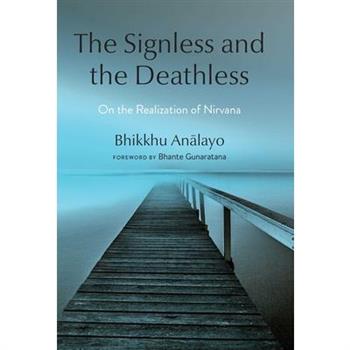

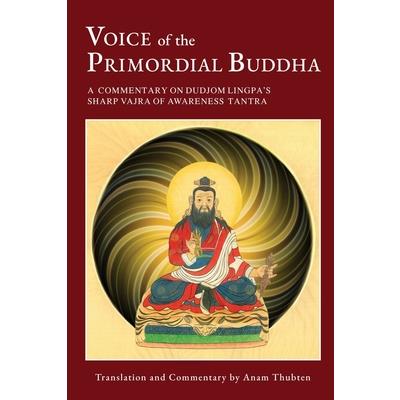
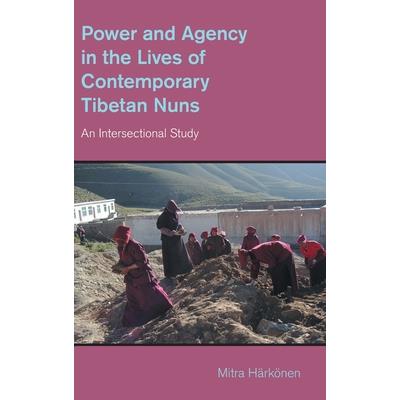
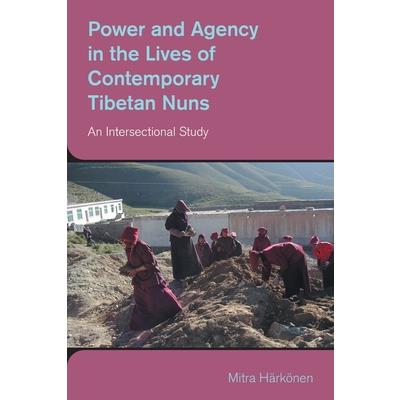

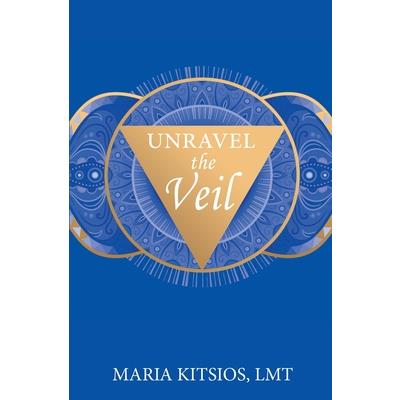

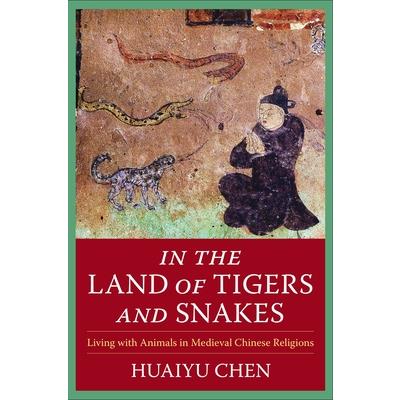
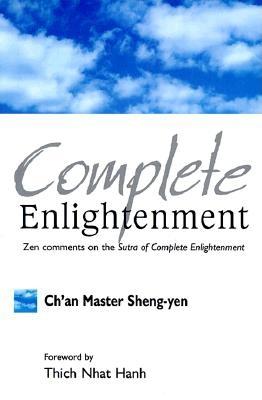
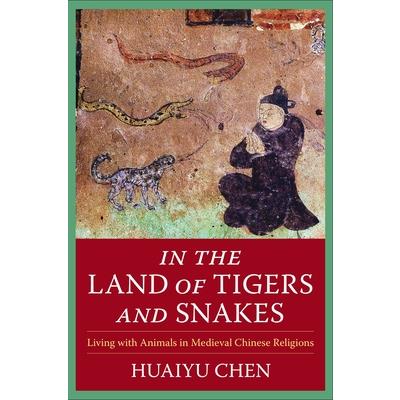
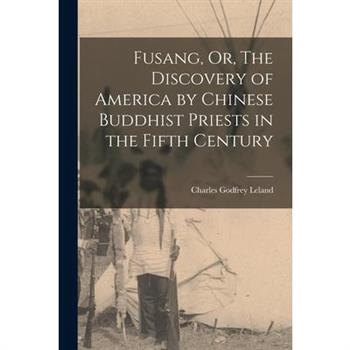
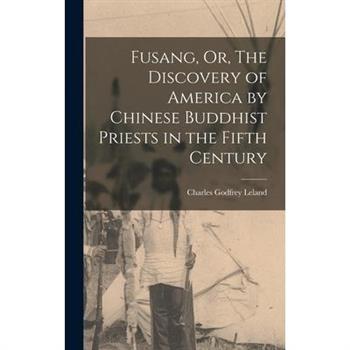
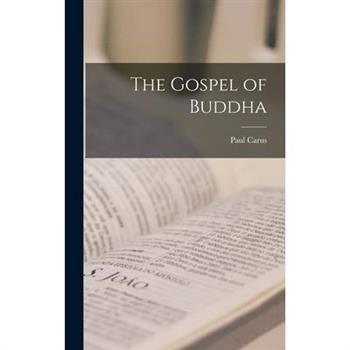
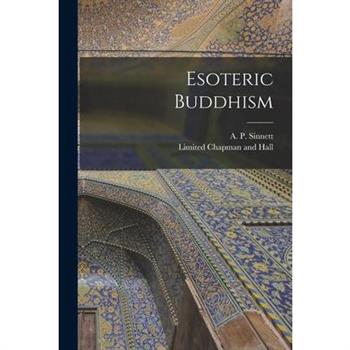

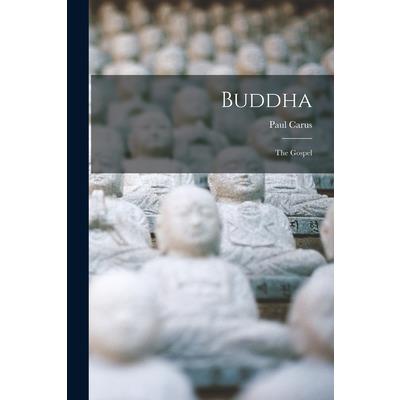
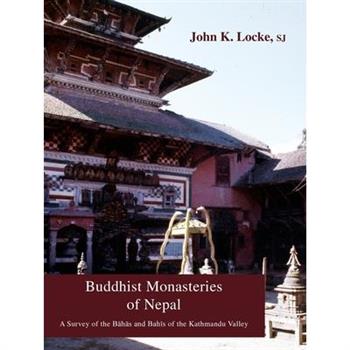

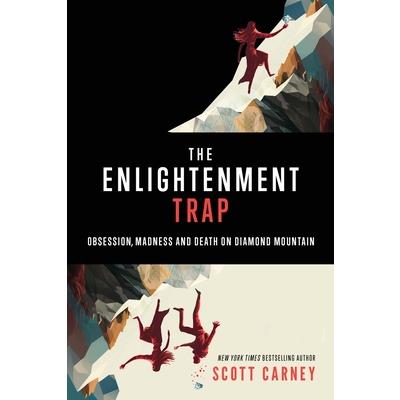
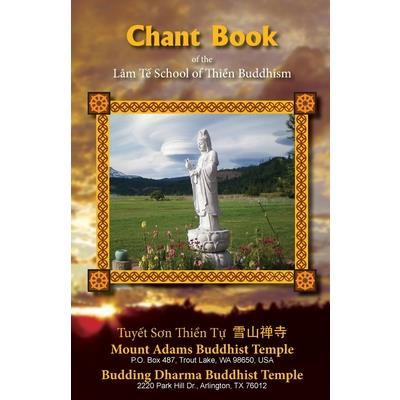
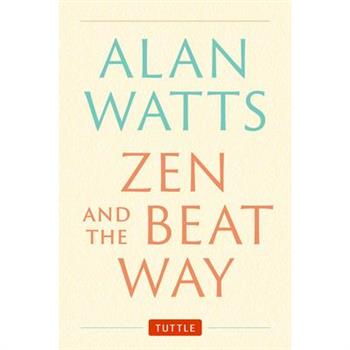

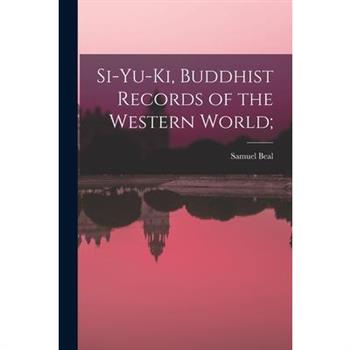
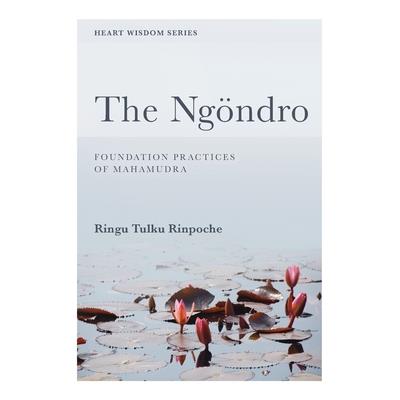
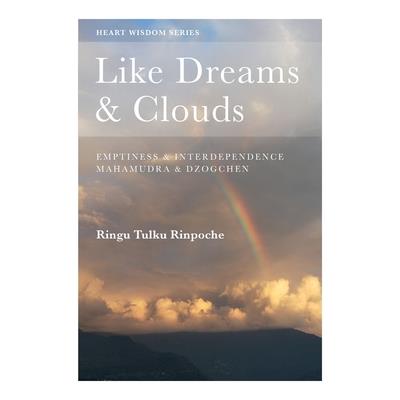
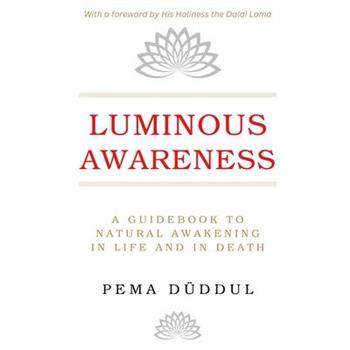

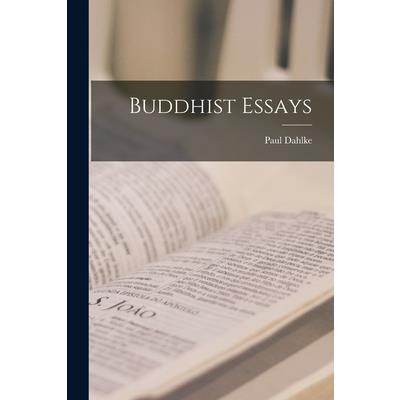
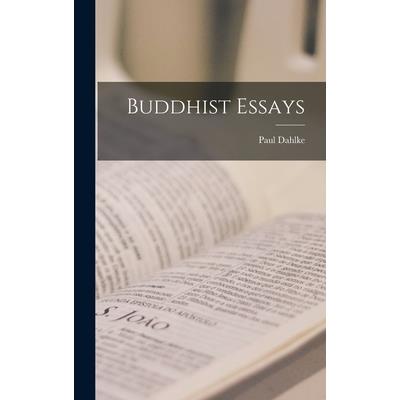
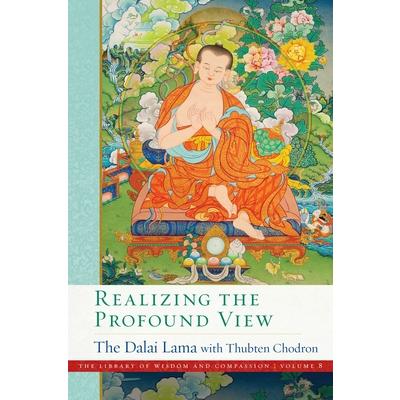
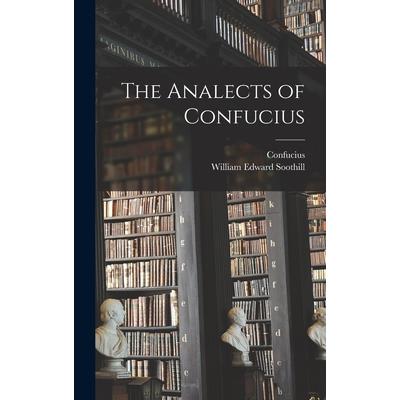
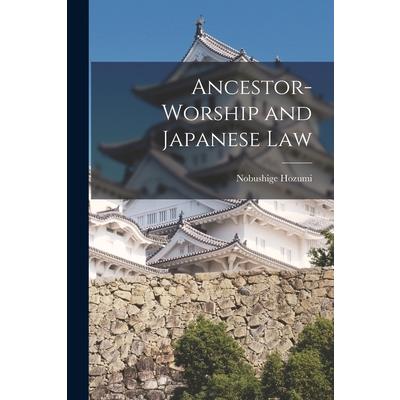
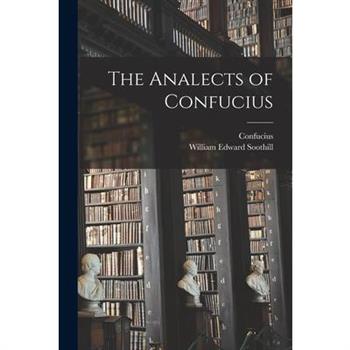
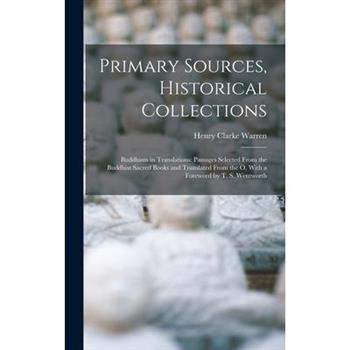
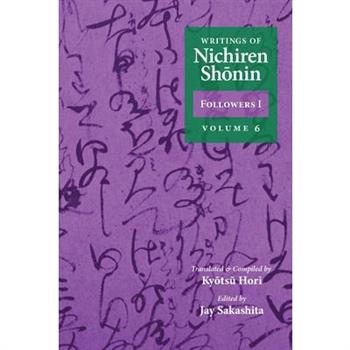

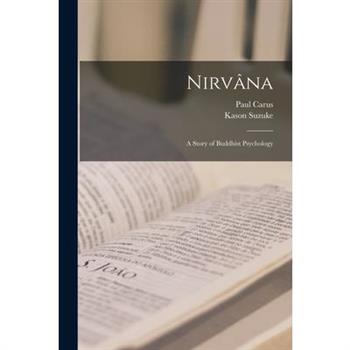

![A Short History of The Twelve Japanese Buddhist Sects [microform] A Short History of The Twelve Japanese Buddhist Sects [microform]](https://cdn.kingstone.com.tw/english/images/product/6116/9781017566116m.jpg)
![A Short History of The Twelve Japanese Buddhist Sects [microform] A Short History of The Twelve Japanese Buddhist Sects [microform]](https://cdn.kingstone.com.tw/english/images/product/1431/9781017571431m.jpg)

